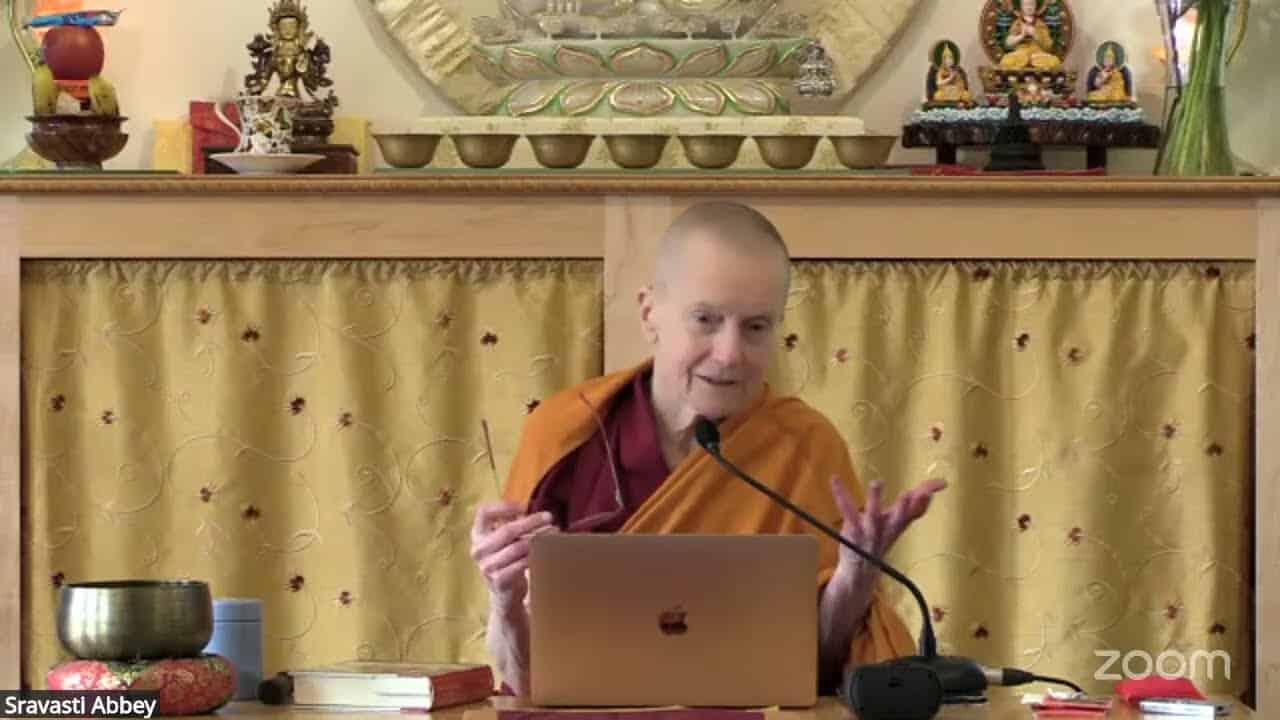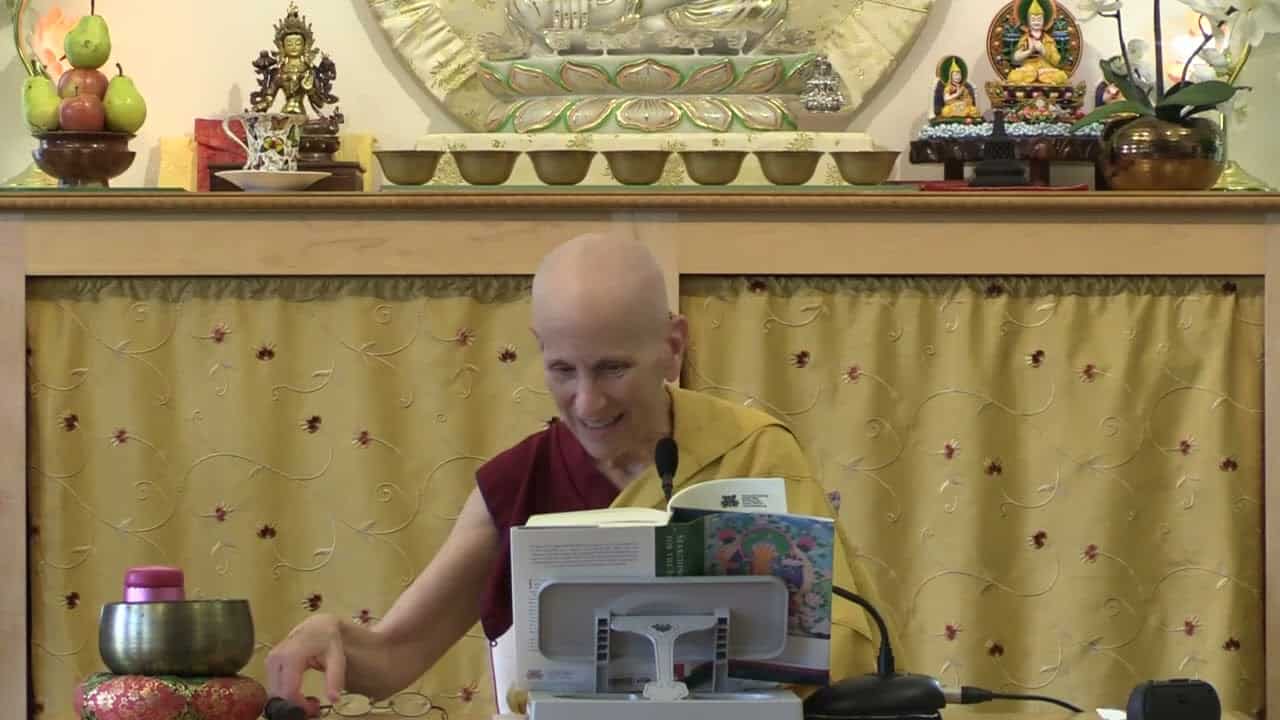Objects for developing serenity
52 Following in the Buddha's Footsteps
Part of an ongoing series of teachings based on the book Following in the Buddha's Footsteps, the fourth volume in The Library of Wisdom and Compassion series by His Holiness the Dalai Lama and Venerable Thubten Chodron.
- Review of four types of extensive objects
- Analytic, non-analytic, limits of existence and purpose
- Objects for purifying behaviour
- Behaviour dominated by attachment, anger, confusion, conceit or distracting thoughts
- Objects of expertise
- Five aggregates, 18 constituents, 12 sources, 12 links of dependent origination, and appropriate and inappropriate results
- Objects for purifying afflictions
- Four form and four formless meditative absorptions
- Using conventional nature of the mind as the observed object
52 Objects for Developing Serenity (download)
Contemplation points
- Take some time to review the different types of meditation that we can use in our practice of serenity listed below. What are the benefits of each?
- Extensive objects
- Objects for purifying behavior
- Objects of expertise
- Objects for purifying afflictions
- Which of the afflictions do you struggle with most in your life? What meditation mentioned in the text is most beneficial for that particular affliction? How might repeated meditation on this topic benefit your life, your practice, your relationships with others?
- In the context of meditating on the conventional nature of the mind, what does it mean that “mind focuses on mind?” What are the challenges of using the mind as the observed object? What are we encouraged to do to overcome these difficulties and obtain a glimpse of the clear and cognizant nature of the mind?
Venerable Thubten Chodron
Venerable Chodron emphasizes the practical application of Buddha’s teachings in our daily lives and is especially skilled at explaining them in ways easily understood and practiced by Westerners. She is well known for her warm, humorous, and lucid teachings. She was ordained as a Buddhist nun in 1977 by Kyabje Ling Rinpoche in Dharamsala, India, and in 1986 she received bhikshuni (full) ordination in Taiwan. Read her full bio.


